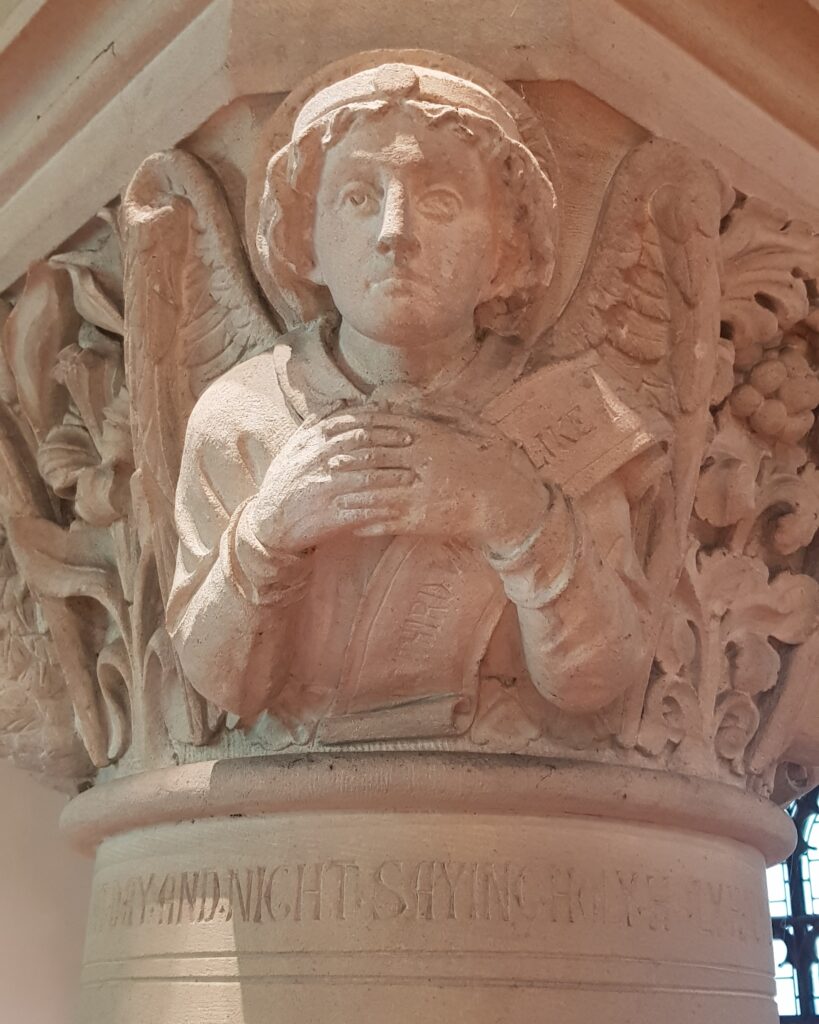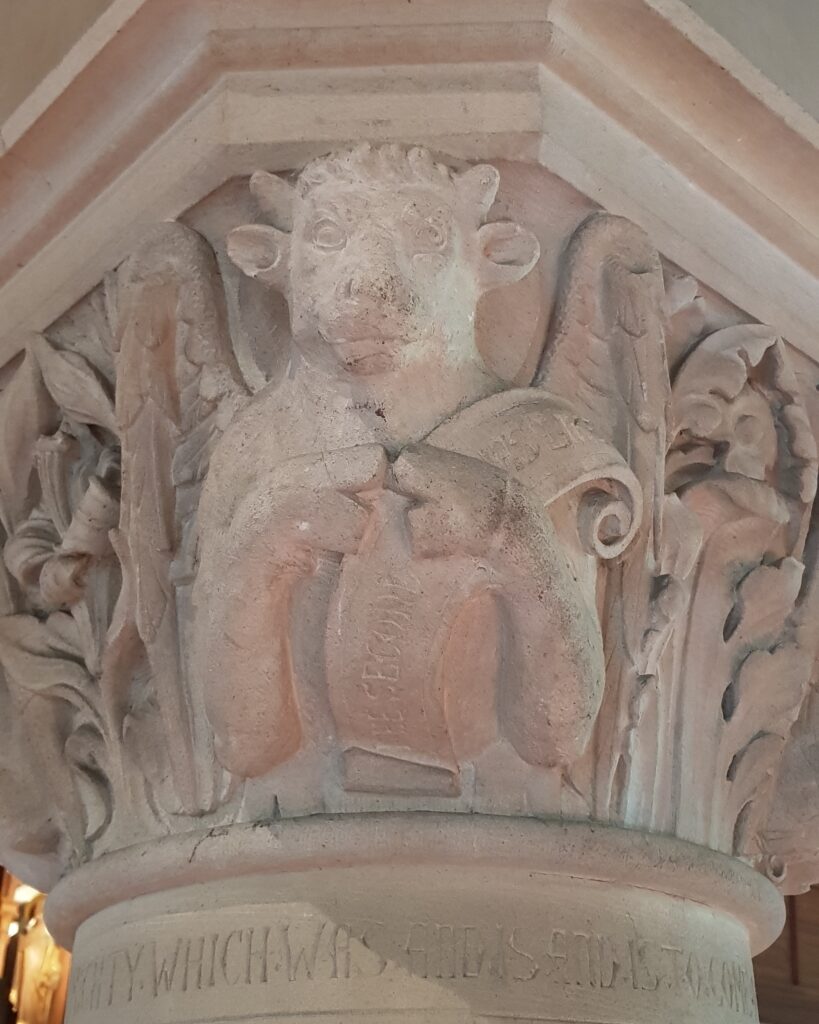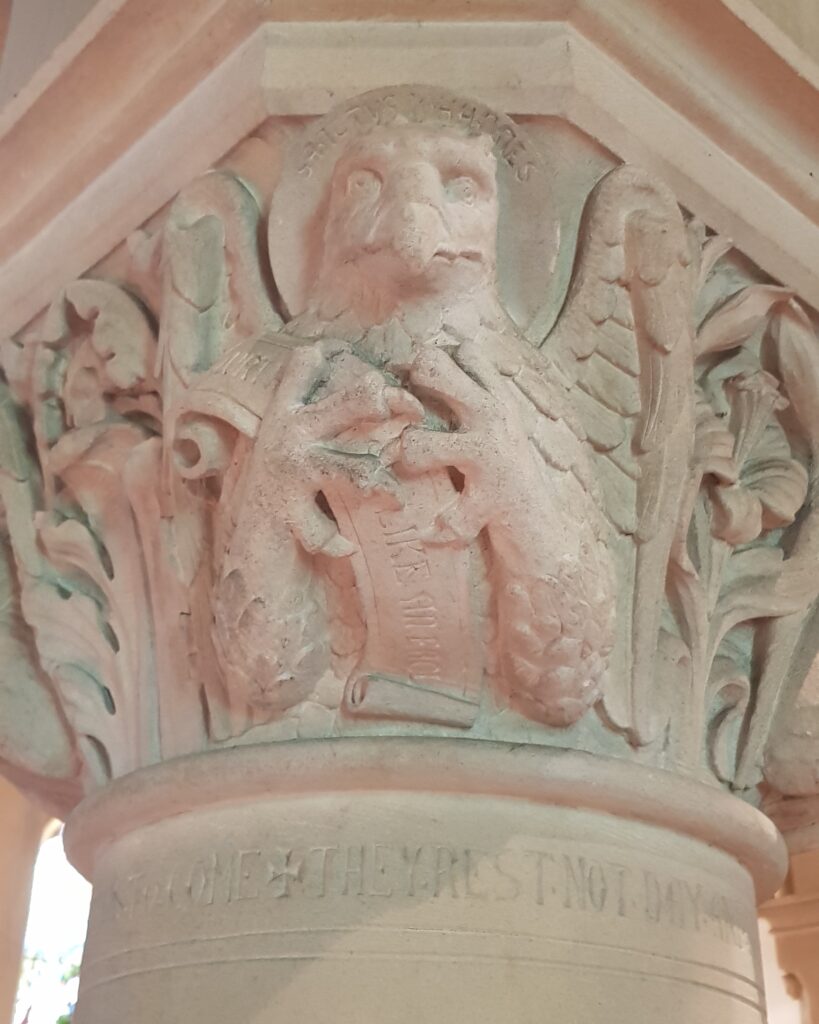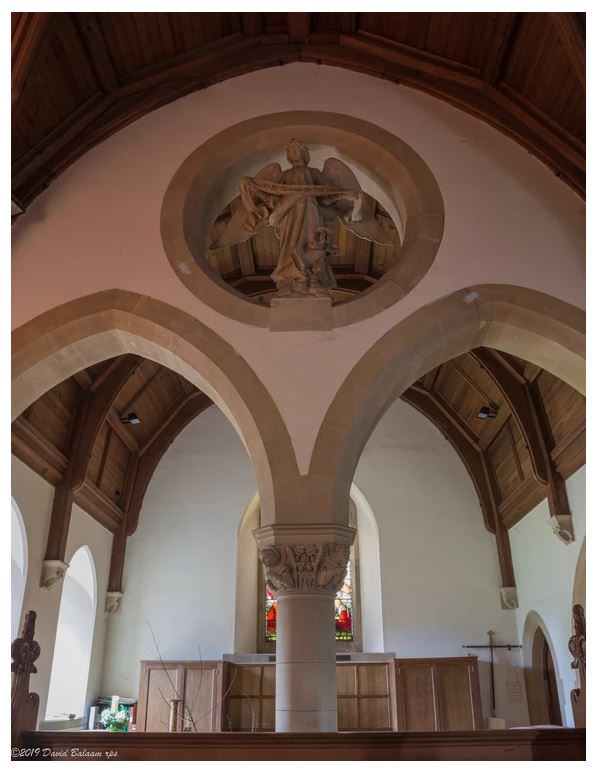The Evangelists
Beneath the two gothic arches to the North Transept there is a massive pillar, and on its capital there are fine carvings representing the four Evangelists, each a writer of the four Gospels.
The Evangelists are shown as a lion (Mark - Sanctus Marcus), an ox (Luke - Sanctus Lucas), a man (Matthew - Sanctus Matthias) and an eagle (John - Sanctus Johannes).
These are the four living creatures seen by St John in a vision and recorded in the Book of Revelation (4. 7-8) and also taken from references in the book of Ezekiel, Chapter 1, verse 10:- "As for the appearance of their faces; the four had the face of a human being, the face of a lion on the right side, the face of an ox on the left side, and the face of an eagle; such were their faces. Their wings were spread out above". In the book of Revelation, Chapter 4, verse 7 there is a similar reference:- "the first living creature like a lion, the second living creature like an ox, the third living creature with a face like a human face, and the fourth living creature like a flying eagle. And the four living creatures, each of them with six wings".
It is suggested by some writers that the wings on each of the symbols of the Evangelists is to show their connection to the divine. Perhaps to be viewed, like angels, as the messengers of God. They are the bringers of the Gospel, that is, the "good news."
Revelation continues, the creatures "they rest not day and night, saying 'Holy, holy, holy, Lord God Almighty, which was, and is, and is to come' ". This text can be seen carved around the top of the column.
It is thought the carvings are by Axel Haig.
The large stone angel in the roundel above the arch leading to the North Transept is very different in style and does not appear to be by Axel Haig. The sculptor is unknown. The angel's scroll reads "Glory to God in the highest"
-
The Evangelists - Matthew - Man

The image attributed to Matthew is a divine man. His Gospel is concerned to show the genealogy of Jesus from Abraham to the King David (14 generations) and from David to the deportation into Babylon (14 generations) and from the exile in Babylon to the Messiah a further 14 generations. Matthew is seen as the Gospel of Christ's humanity and His humbleness and humility are highlighted throughout the book.
-
The Evangelists - Mark - Lion

The image attributed to Mark is that of winged lion.
Mark begins his gospel with the mission of John the Baptist "crying out in the wilderness." His voice is said to have sounded like that of a roaring lion
His Gospel begins with references to the Prophet Isaiah. John the Baptist is the messenger who proclaimed the coming of the Messiah. The winged lion, which signifies leadership and royalty, is therefore seen as an appropriate symbol for the Son of God.
The lion symbolism appears in the book of Revelation and in a vision of the Prophet Ezekiel (1:10)
-
The Evangelists - Luke - Ox

The image attributed to Luke is that of a winged ox. A calf or indeed oxen were used in sacrifices in the Temple. The opening of Luke's Gospel begins with the announcement of the birth of John the Baptist to his father Zechariah a priest in the Temple who was offering sacrifice there. The winged ox is seen as a reminder of the priestly character of Jesus and of his sacrificial death for the sins of all mankind.
-
The Evangelists - John - Eagle

The image attributed to John is a winged or flying eagle. This book is totally unlike the three synoptic gospels in that it begins with a lofty theological meditation upon the meaning of the fact of Christ. It concentrates on the long discourses that took place between Jesus and others. The reference in the Gospel to the disciples receiving the Holy Spirit perhaps makes the symbol of a winged or flying eagle even more powerful.
-
Stone Angel

-
Lamb of God

The bases of the arches are each elaborately carved: one with the 'Lamb of God' (a description of Jesus used by John the Baptist) and one with the Christogram 'IHS' (derived from the Greek spelling of Christ).
-
I H S

The bases of the arches are each elaborately carved: one with the 'Lamb of God' (a description of Jesus used by John the Baptist) and one with the Christogram 'IHS' (derived from the Greek spelling of Christ).
